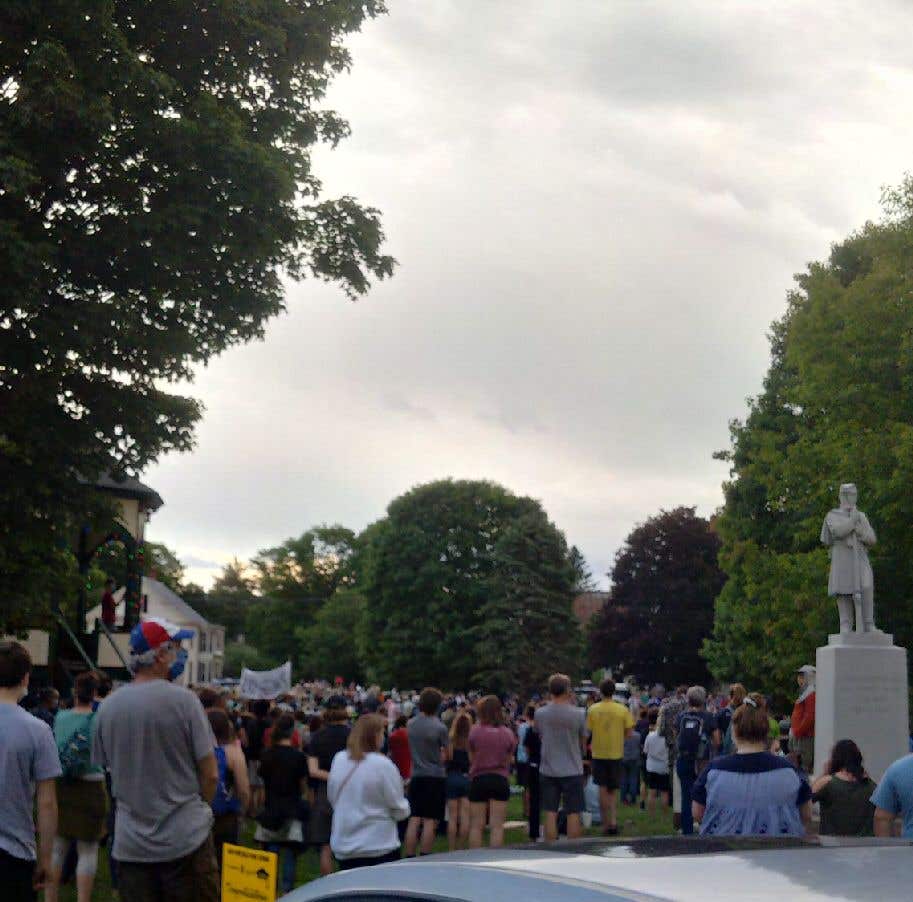
Judy Hayward
Preservation, Place and Protests
Last month I attended two Black Lives Matter rallies in Vermont. Both took place on Town Commons or Greens, and each was attended by hundreds of people—they were peaceful and reflective. It made me pause and reflect on the importance of Public Spaces as gathering points for people to come together—for music, for fairs, and to rally for serious change in our democratic republic.
We have seen public monuments toppled, “Black Lives Matter” painted on streets and both peaceful and violent demonstrations in towns and cities, large and small. Both the destruction of monuments and the painting of purposeful slogans are expressions of the power of Public Art in our daily lives.
The fact that in 2020—a year that promised perfect vision by its very numbers—we are still striving for political equality for all is both heartbreaking and hopeful. The words in the Constitution that have always struck a chord with me are “In order to form a more perfect union…”; it implies that we didn’t start with a perfect expression of government, but that we strive for perfect. When we “take to the streets” or gather in public parks, we are the continued expression of the drive to “form a more perfect union.”
As practitioners of traditional building arts and science, we would do well to reflect on our work to keep the places where democracy can thrive at the forefront of design and building. Encouraging deep thoughts that lead to meaningful action to extend our freedoms to everyone needs to be implicit in our work. The creation of new monuments, parks, pedestrian friendly streets, and new civic buildings affords us the opportunity to support our coming together to express our First Amendment Rights and implement our human responsibilities to work in “union.”
A few years ago, the National Trust for Historic Preservation started a campaign to document historic properties that are important to individuals and groups in the US—“This Place Matters.” People gathered around a sign that stated, “This place matters.”, and they sent their images to the website. Today, the website features stories of diversity in American culture. We could not have known then just how prescient this preservation effort would be.
Judy L. Hayward spends her days pursuing a passion for historic architecture and the ways in which it can be reused to sustain and grow healthy communities. She develops courses in partnership with builders, architects, traditional craftspeople and others to teach both historic preservation and traditional building skills. She has one foot in the nonprofit world as executive director of Historic Windsor and the Preservation Education Institute and the other foot in the world of media and information services as education director for the Traditional Building Conference Series and Online Education Program.






